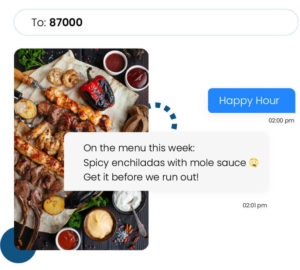
Short Codes Combined with Keyword Text Messaging Platforms For Marketing: What You Need To Know
Short codes and keyword text messaging are emerging as innovative marketing tools. This article focuses on how businesses can use these methods to encourage customer opt-in and personalize marketing efforts. It discusses the benefits of short codes for quick dissemination and two-way communication, enhancing customer engagement and brand visibility.

Understanding Short Code Text Messaging
Short code text messaging involve sending SMS messages via a short number, typically five to six digits long. These short codes are uniquely designed for ease of use. But why short codes? Compared to traditional, longer phone numbers, short codes are easier to remember and type, especially when customers are engaging on mobile devices and have a short time span in which to notice and respond to your offer. This is why you will often see keywords and a short code being promoted to consumers in TV and radio ads saying things like “text this word to 55111 now to receive this special offer”. This opt-in technique is especially effective with TV, radio, social media ads, or even on truck wraps, billboards, and yard signs, etc. These are all situations where there is very little time to capture your prospects’ attention, so you have to make it easy to remember and simple to respond. This makes them an ideal tool for businesses getting people to opt-in to learn more about products, promotions, and events.
Choosing the Right Text Messaging Platform
Choosing the right text messaging platform for your business is crucial to leveraging the full potential of short code messaging. An ideal application should not only offer short code capabilities but also a range of features that can enhance your SMS marketing efforts. For example, being able to provide multiple keywords and the ability to ask for follow-up information allows a business to better qualify those opting in so the right information can be sent to them. In addition, by shifting the conversation from a short code to true business number, you can set up follow-on drip campaigns to nurture them toward a purchase, including images and on-going communications that are far more personalized and relevant than is possible to do with outbound short code messaging. When you are evaluating platforms, consider the type of integration you want with your existing systems. How robust and flexible are the platform’s APIs, can they support scheduling and other sophisticated integrations you may need.
Maximizing the Potential of Short Code Text Messaging

Once you’ve chosen a suitable platform, the next step is to maximize its potential. Begin by promoting your short code and associated keywords across your marketing channels. Make sure your customers know they can interact with your brand via SMS and educate them on the benefits of your text offers, such as exclusive promotions or timely service reminders. Try out different keywords to see which ones garner the most attention. Using different keywords also allows you to track preferences for your customers, allowing that ability to make hyper-relevant offers to your audience.
Creating a diverse range of SMS marketing campaigns will help you effectively engage different segments of your audience. For example, you could set up a campaign for customer service updates, another for promotional offers, and a third for product tips. Also, keep in mind that while short code text messaging is a powerful tool, it shouldn’t be the only method you use to reach your customers.
The Costs Associated with Short Code Text Messaging
Investing in a short code text messaging platform can cost thousands of dollars. Some text messaging vendors already have their own short codes which you can access for a very reasonable fee which makes it a much more affordable tool for many businesses and can put you on a level playing field with much larger businesses. Keep in mind that you will typically want to use unique and eBay to remember keywords in association with these short codes so that you can include them in your campaigns.
By using this approach, you can enhance customer engagement, drive conversions, and reduce costs by automating certain interactions and making them more relevant.
Legal Considerations for Short Code Text Messaging
While short code text messaging opens exciting opportunities for businesses, it’s not without legal considerations. Businesses must comply with telecommunications and data privacy laws, which vary by country. In the U.S., when consumers opt-in to receive marketing offers by texting your keyword with a short code, they are providing consent to receive the information you have advertised.
To avoid potential legal issues, advanced text messaging platforms offer compliance features, such as automatic opt-in/opt-out capabilities based on consumer responses. Some platforms offer sentiment analysis too so that if a consumer changes their mind about receiving texts and doesn’t use a common word like STOP, these types of messages can be flagged and opted out using Artificial Intelligence techniques. This is critical as the penalties for not honoring an opt-out request are very high. Ensure you have a comprehensive understanding of the laws applicable to your business and consult with a legal professional if necessary. Always prioritize the privacy and rights of your customers and beware of sending too many messages so that your customers will see texting as a valuable way to communicate with your business.
Embrace the Power of Short Code Text Messaging
Using keywords and short codes with advanced text messaging platforms can offer businesses a compelling way to engage their customers in a fast, efficient, and personalized manner. As you explore these platforms, remember that the most effective ones will align with your business’s unique needs, integrate well with your existing systems, and adhere to best practices.
Your takeaway tip: As you dive into the world of short code messaging, keep customer experience at the forefront. Remember, the goal isn’t to bombard customers with messages but to provide value and foster stronger relationships.





